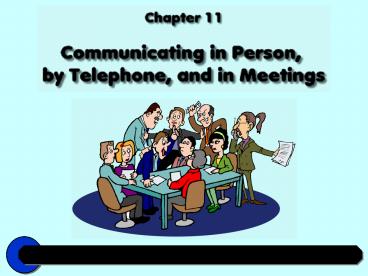Using Your Voice as a Communication Tool - PowerPoint PPT Presentation
1 / 21
Title:
Using Your Voice as a Communication Tool
Description:
Using Your Voice as a Communication Tool Improve your pronunciation. naturally not natcherly accessory not assessory don t you ... – PowerPoint PPT presentation
Number of Views:219
Avg rating:3.0/5.0
Title: Using Your Voice as a Communication Tool
1
2
Using Your Voice as a Communication Tool
- Improve your pronunciation.
- naturally not natcherly
- accessory not assessory
- dont you not doncha
3
Using Your Voice as a Communication Tool
- Work on the quality of your voice.
- Do you sound friendly, alert, or positive?
- Do you sound angry, slow-witted, or negative?
4
Using Your Voice as a Communication Tool
- Adjust the volume of your voice and your rate of
speech. - Speak as loudly or softly as the occasion
demands. - Dont make your listeners strain to hear you.
- Dont speak too rapidly.
5
Using Your Voice as a Communication Tool
- Use emphasis to express meaning.
- Stress the words that require emphasis.
- Use of a lower pitch and volume can make you
sound professional or reasonable.
6
Promoting Positive Workplace Relations
- Use correct names and titles.
- Choose appropriate workplace topics.
- Avoid negative remarks.
- Listen and learn.
- Give sincere and specific praise.
7
Offering Constructive Criticism on the Job
- Mentally outline your conversation.
- Use face-to-face communication.
- Focus on improvement (offer to help).
- Be specific avoid broad generalizations.
- Focus on the behavior, not the person.
- Use we rather than you.
8
Offering Constructive Criticism on the Job
- Encourage two-way communication.
- Avoid anger, sarcasm, and a raised voice.
- Keep it private.
9
Responding Professionally to Workplace Criticism
- Listen without interrupting.
- Determine the speakers intent.
- Acknowledge what you are hearing.
- Paraphrase what was said.
- If necessary, ask for more information.
- Agreeif the comments made are fair.
10
Responding Professionally to Workplace Criticism
- Disagree respectfully and constructivelyif you
feel the comments made are unfair. - Look for a middle position.
11
Common Conflict Response Patterns
- Avoidance/withdrawal
- Accommodation/smoothing
- Compromise
- Competition/forcing
- Collaboration/problem solving
12
Six-Step Procedure for Dealing With Conflict
- Listen carefully. Understand the problem.
- Understand the other point of view.
- Show a concern for the relationship.
- Look for common ground.
- Invent new problem-solving options.
- Reach an agreement based on whats fair.
13
Making Effective Telephone Calls
- Placing Calls
- Plan a mini agenda.
- Use a three-point introduction
- State your name.
- State your affiliation.
- Give a brief explanation of why you are calling.
- Be cheerful and accurate.
- Bring it to a close.
14
Making Effective Telephone Calls
- Avoid telephone tag.
- Leave complete voice-mail messages.
15
Making Effective Telephone Calls
- Receiving Calls
- Identify yourself immediately.
- Be responsive and helpful.
- Be cautious when answering calls intended for
others. - Take messages carefully.
- Explain when transferring calls.
16
Practicing Courteous and Responsible Cell Phone
Use
- Be courteous to those around you.
- Observe the rules for wireless-free areas.
- Speak in low, conversational tones.
- Take only urgent calls.
- Drive now, talk later.
17
Meetings
- Planning a Meeting
- Ask yourself whether a meeting is really
necessary. - Invite only key individuals.
- Prepare an agenda (include topics, times, and
names).
18
Meetings
- Conducting a Meeting
- Start the meeting on time.
- Begin with an introduction that establishes the
goal and length of the meeting. - Provide the background of the problem(s), suggest
possible solutions. - Present a tentative agenda.
19
Meetings
- Establish ground rules.
- Appoint a secretary, who will take minutes, and a
recorder, who will track ideas on a flipchart. - Encourage participation by all, but avoid
digressions. - When the group reaches consensus, summarize and
ask for confirmation.
20
Meetings
- Concluding a Meeting and Following Up
- End the meeting on time.
- Summarize the results achieved.
- Distribute minutes of the meeting a few days
later. - Remind group members of their follow-up
assignments.
21
End

